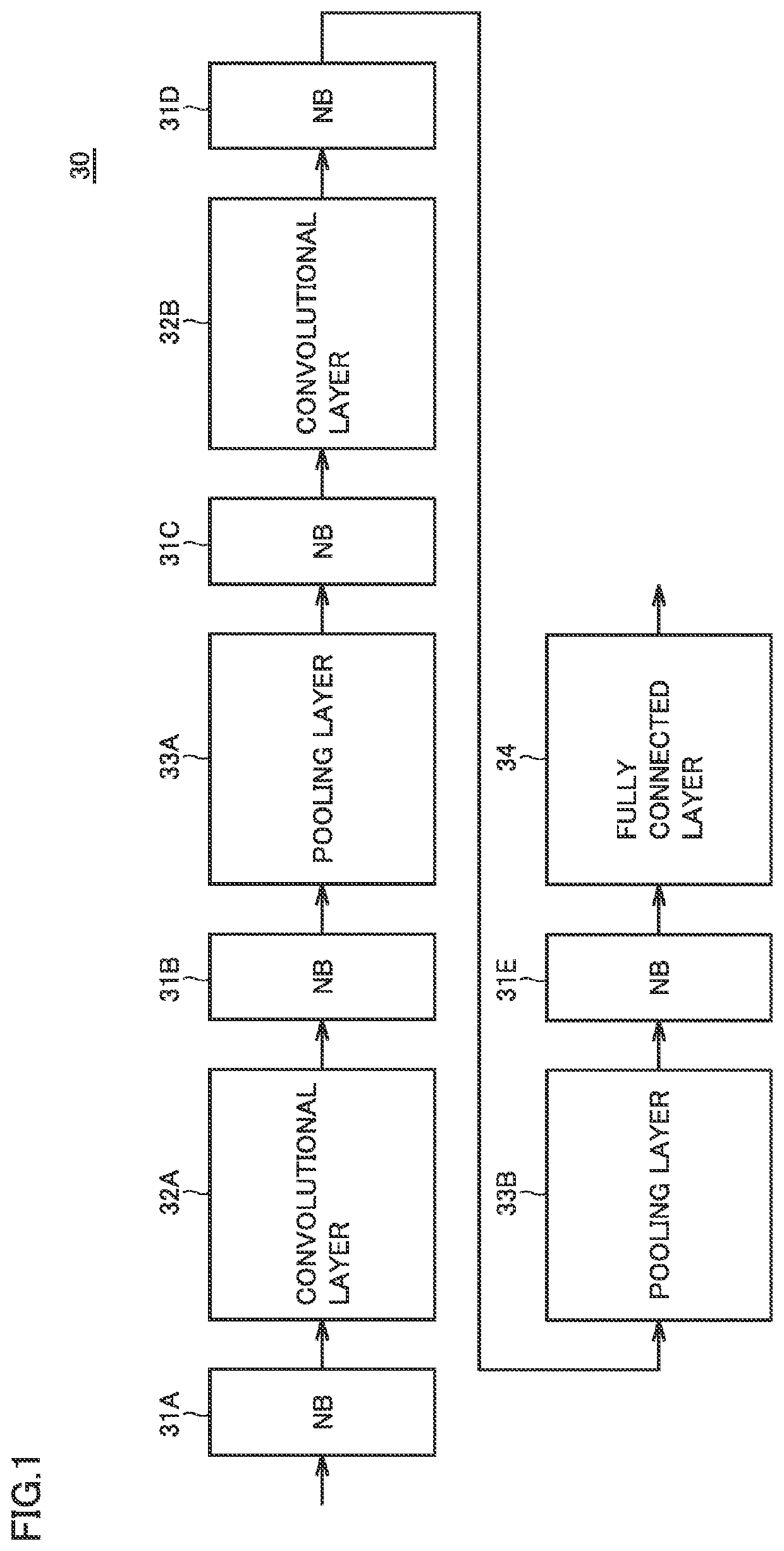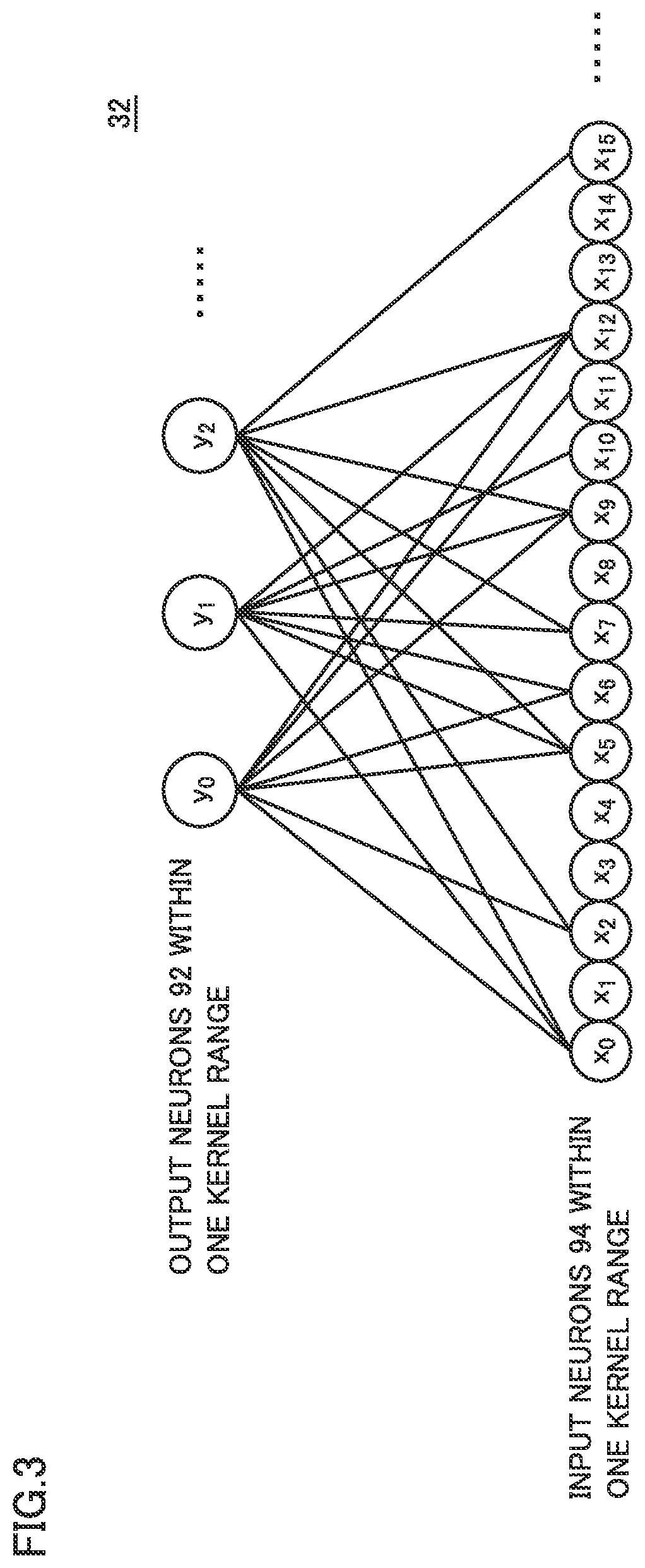Arithmetic device
a technology of arithmetic devices and neural networks, applied in the field of arithmetic devices, can solve the problems that the performance and power consumption of an existing arithmetic device dedicated to a neural network are not necessarily improved, and achieve the effects of increasing the number of computation units, increasing the number of processing elements, and improving the performance of the existing arithmetic devi
- Summary
- Abstract
- Description
- Claims
- Application Information
AI Technical Summary
Benefits of technology
Problems solved by technology
Method used
Image
Examples
first embodiment
Effect of First Embodiment
[0118]As set forth above, according to the arithmetic device for the neural network in the first embodiment, processing element group (GPE) 42 is constituted of a plurality of processing elements (PE) 43, with the plurality of processing elements (PE) 43 being defined as one unit. Processing element groups (GPE) 42 can access in parallel to data scatter register (DSR) 50 provided in data scatter unit (DSU) 41 that stores input data. Therefore, in data scatter unit (DSU) 41, an access port is provided individually for each processing element group (GPE) 42, rather than for each processing element (PE) 43. Consequently, increase in number of access ports when the number of processing elements (PE) 43 and the number of computation units provided in each processing element (PE) 43 increase can be suppressed. Therefore, increase in circuit area in proportion to the number of access ports can be suppressed and processing performance of the arithmetic device can b...
second embodiment
Effect of Second Embodiment
[0148]As set forth above, according to the arithmetic device in the second embodiment, output neurons are allocated to an appropriate processing element (PE) 43 regardless of the order of index numbers of the output neurons defined in the algorithm of the neural network. Thus, output neurons high in ratio of sharing of input data can be allocated to a plurality of processing elements (PE) 43 belonging to identical processing element group (GPE) 42, so that the number of times of access to data scatter unit (DSU) 41 from processing element group (GPE) 42 can be reduced. Consequently, processing performance of the arithmetic device can be enhanced.
Third Embodiment
[0149]According to the arithmetic device in the second embodiment, output neurons 93 within an identical layer can be allocated to any processing element (PE) 43, so that the ratio of sharing of input data accessed by each processing element (PE) 43 can be higher and thus the processing time period ...
third embodiment
Effect of Third Embodiment
[0187]As set forth above, according to the arithmetic device in the third embodiment, in performing a convolution computation with convolution kernel 90 being slid with respect to input neurons 91 in the algorithm of the neural network, a plurality of output neurons corresponding to a plurality of convolution kernels 90 different in position of sliding are simultaneously allocated to processing elements (PE). Since computations for convolution kernels high in ratio of sharing of input data can thus be allocated to a plurality of processing elements (PE) 43 belonging to the same processing element group (GPE) 42, the number of times of access from processing element group (GPE) 42 to data scatter unit (DSU) 41 can be reduced. Consequently, processing performance of the arithmetic device can be enhanced.
PUM
 Login to View More
Login to View More Abstract
Description
Claims
Application Information
 Login to View More
Login to View More - R&D
- Intellectual Property
- Life Sciences
- Materials
- Tech Scout
- Unparalleled Data Quality
- Higher Quality Content
- 60% Fewer Hallucinations
Browse by: Latest US Patents, China's latest patents, Technical Efficacy Thesaurus, Application Domain, Technology Topic, Popular Technical Reports.
© 2025 PatSnap. All rights reserved.Legal|Privacy policy|Modern Slavery Act Transparency Statement|Sitemap|About US| Contact US: help@patsnap.com



